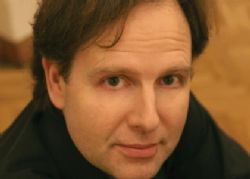|
Symphony
YOUTHFUL VIRTUOSITY ON DISPLAY AT USO'S MAY CONCERTS
by Peter Lert
Saturday, May 17, 2025
Symphony
MYSTICAL PLANETS AND LIVELY GERSHWIN ORTIZ AT FINAL SRS CONCERT
by Peter Lert
Sunday, May 4, 2025
Symphony
VSO'S CONCERT MUSIC OF TIME, MUSIC OF PLACE
by Peter Lert
Sunday, April 27, 2025
Choral and Vocal
VOCAL ELEGANCE AND FIRE AT THE 222'S RECITAL APRIL 26
by Pamela Hicks Gailey
Saturday, April 26, 2025
CANTIAMO SONOMA SINGS AN INSPIRED GOOD FRIDAY MOZART REQUIEM CONCERT
by Pamela Hicks Gailey
Friday, April 18, 2025
DRAMATIC SHOSTAKOVICH SYMPHONY CLOSES PHILHARMONIC'S 25TH SEASON
by Terry McNeill
Sunday, April 13, 2025
LARGE COLLEGE OF MARIN AUDIENCE GREETS STOPHER ARTISTRY
by Terry McNeill
Saturday, April 5, 2025
Chamber
FRISSON DELIVERS SHIVERS OF DELIGHT
by Abby Wasserman
Sunday, March 30, 2025
OLD AND MOSTLY NEW IN SRS MARCH CONCERT IN WEILL
by Peter Lert
Saturday, March 22, 2025
Symphony
TWO FORMIDABLE SYMPHONIES AND PURPLE MOUNTAINS AT SRS CONCERT
by Peter Lert
Sunday, February 23, 2025
|
 |
 Pianist Kevin Kenner |
ROBUST PLAYING IN KENNER'S ANGELICO HALL DEBUT RECITAL
by Terry McNeill
Sunday, November 9, 2014
Europe-based Kevin Kenner chose a husky program for his Marin debut recital Nov. 9 in Dominican University’s Angelico Hall, and elected three masterpieces from the Romantic piano literature.
Schubert’s C Major “Wanderer” Fantasy has nearly disappeared from recital programs, but it was a deft opening selection. It’s a work of momentum and drama throughout, and Mr. Kenner surprisingly was in no hurry in most of the earlier sections, using lots of damper pedal and emphasizing rumbling left-hand phrases. This changed just before the beginning of the fugue, when the playing had a faster tempo and moved to a grandiose, orchestral style. In the accelerando leading to the last part, the music almost went off the rails, but Mr. Kenner’s octave technique never failed him.
Liszt’s Ballade in B Minor followed, a work not popular with audiences but widely loved by pianists. Mr. Kenner played it well, with the requisite rhetoric and imagination. His pedaling sustained chords while the always moving accompaniment was clear, and Liszt’s novel harmonies (for 1853) were underscored. Mr. Kenner doubled some bass chords that used the house piano’s extra notes below the normal bottom “a”, creating a rich resonance. It was a compelling performance in the grand manner and the highlight of the afternoon.
Chopin’s Preludes from Op. 28 comprised the entire second half and here again the artist favored slower tempos, notwithstanding the fleet Preludes in G (No. 3) and B Flat (No. 16). The playing was most persuasive in the pieces that needed his sensitive touch and phrases of melancholy and even lassitude.
Mr. Kenner’s view of these 24 short gems is a modern one, meaning there is a focus on control and internal architecture and the absence of voice leading, generous rubatos and the vocal nature of Chopin’s genius. Some of the lyrical Preludes (Nos. 9, 11, 13, 17 and 19) were played with a lovely tone but lacked the poetic repose and grace possessed by the greatest Chopin pianists. The massive and majestic C Minor Prelude (No. 20) had just the right restlessness, finally dissolving to a tranquil calm.
Completing the program was the angry and defiant Prelude in D, and the pianist’s left-hand rotational command was impressive. The damper pedal was held through the final triumphant and hugely resonant D’s.
The audience of 100 demanded an encore and the pianist complied with a coarse and overly loud performance of Paderewski’s sparkling salon piece, the Caprice ŕ la Scarlatti, Op. 14, No. 3.
|
